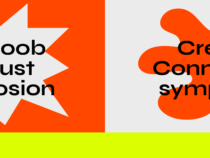05.11.2022–12.02.2023
The Queue. An Episode in Tartu’s Photo History is an exhibition about an exhibition. On 3 March 1983, the first exhibition in the series Woman in Photographic Art was organised by the Tartu Photo Club and opened in the Tartu Art House, immediately becoming one of the most popular exhibitions in Tartu history. Altogether five exhibitions took place: in 1983, 1986, 1989 and 1991 in the Tartu Art House, and in 1993 in the Küü Gallery.
The most popular of the Woman in Photographic Art exhibitions took place in 1989 and over four weeks it was visited by 24 000 people. The stories about the queue at the Art House’s doors is the starting impulse for the present exhibition, but another aim of focusing on this curious episode is to bring attention to the international reach of photography in the 1980s and to the peculiar role that photo clubs, which enjoyed somewhat greater freedom than the strictly regimented creative unions, have played in Estonian cultural history.
In the Soviet Union, photography was not recognised as a form of art and therefore there were no photographic artists. A professional photographer was somebody who took photos for the media, for a factory or for some other institution. At the same time, beginning in the 1960s photography as a hobby was promoted by the state and thus a photo club was also formed under the auspices of the Tartu Cultural Centre, functioning in the eyes of the authorities as a hobbyist art circle. By offering an outlet for photographic artists whose works were shunned by traditional art exhibitions, the Tartu Photo Club was actually quite significant.
Some of the most notable events of the Tartu Photo Club made up the series of competition-exhibitions Woman in Photographic Art, which were organised by the club’s creative director Valeri Parhomenko. Besides the number of visitors, the international reach of the exhibition is noteworthy. Woman in Photographic Art can be characterised as an exhibition of deficit. Eroticism was publicly deplored in the Soviet Union and organising an exhibition around the theme of women demanded quite a lot of political manoeuvring: the third theme, besides nudes and portraits, focused on women’s social roles, and the fact that the exhibition was opened on International Women’s Day was no coincidence. However, everything from abroad, including from other socialist countries, was considered equally as rare as eroticism in the USSR. Another important aspect was the fact that the exhibition was almost the only opportunity to experience photos of high technical quality, which the reproductive possibilities of Soviet media could not offer.
With the growing freedom of the press – the first issue of the erotic magazine Maaja was published in 1989 and nude photos were printed on the cover of the daily newspaper Edasi – Woman in Photographic Art lost its value as a deficit item. Parhomenko did try to transform the salon into a cooperative and later a joint-stock company to restructure it into something suitable for the market economy, but during the era of cowboy capitalism in the 1990s he was not successful.
The Queue. An Episode in Tartu’s Photo History is part of the exhibition series Tartu 88, which consists of archive projects of the Tartu Art Museum meant to cover the last 35 years of Estonian art history, the most under-represented period in the museum’s archives. The aim of the project is to create thoroughly researched additions to the archive to supplement materials in the museum’s collections from earlier eras.
The present exhibition will inevitably not tell the whole story of the competition Woman in Photographic Art, but hopefully the added attention it garners will elicit recollections from people we did not know to interview during the preparation process and to facts which we were unable to find.
Curator: Indrek Grigor
Designer: Alexey Murashko
Coordinator: Kristlyn Liier
Translators: Hendrik Lindepuu, Alicja Rosé, Peeter Talvistu
Artists: Andrei Dobrovolski, Urve Kaaristu, Toomas Kalve, Otto Kuus, Peeter Langovits, Harald Lepikson, Meelis Lokk, Alar Madisson, Tõnu Noorits, Ain Protsin, Arno Tameri, Ain Tavita, Ann Tenno, Malev Toom, Peeter Tooming, Ülo Udumäe
Collaboration partners: Fotomuuseum, Eesti Rahvusarhiiv, Eesti Rahva Muuseum, Helju Kommer, Tartu Linnavalitsuse linnakantselei arhiiv, Tartu Ülikooli Raamatukogu
Exhibition team: Indrek Aavik, Nele Ambos, Maarika Espenberg, Joanna Hoffmann, Mare Joonsalu, Margus Joonsalu, Viktor Kiss, Jaanika Kuznetsova, Katrin Lõoke, Tõru-Tõnn Parts, Kristel Sibul, Peeter Talvistu, Kristo Tamm, Urmo Teekivi, Mae Variksoo
Special thanks to: Hans Alla, Raimu Hanson, Relika Kala, Toomas Kalve, Andres Keil, Eve Kiiler, Helju Kommer, Jaan Künnap, Anneli Laanemets, Peeter Langovits, Meelis Lokk, Jaan Malin, Adam Mazur, Jaana Mäesalu, Tõnu Noorits, Leili Parhomenko, Valeri Parhomenko, Tiiu Puik, Ain Protsin, Annemari Põder, Alise Tifentale, Andres Toodo, Malev Toom, Mesike Tõrv, Ülo Udumäe, Rein Urbel, Tõnu Valge, Tanel Verk
Supported by: the Cultural Endowment of Estonia
Exhibition views
Photos: Madis Palm









